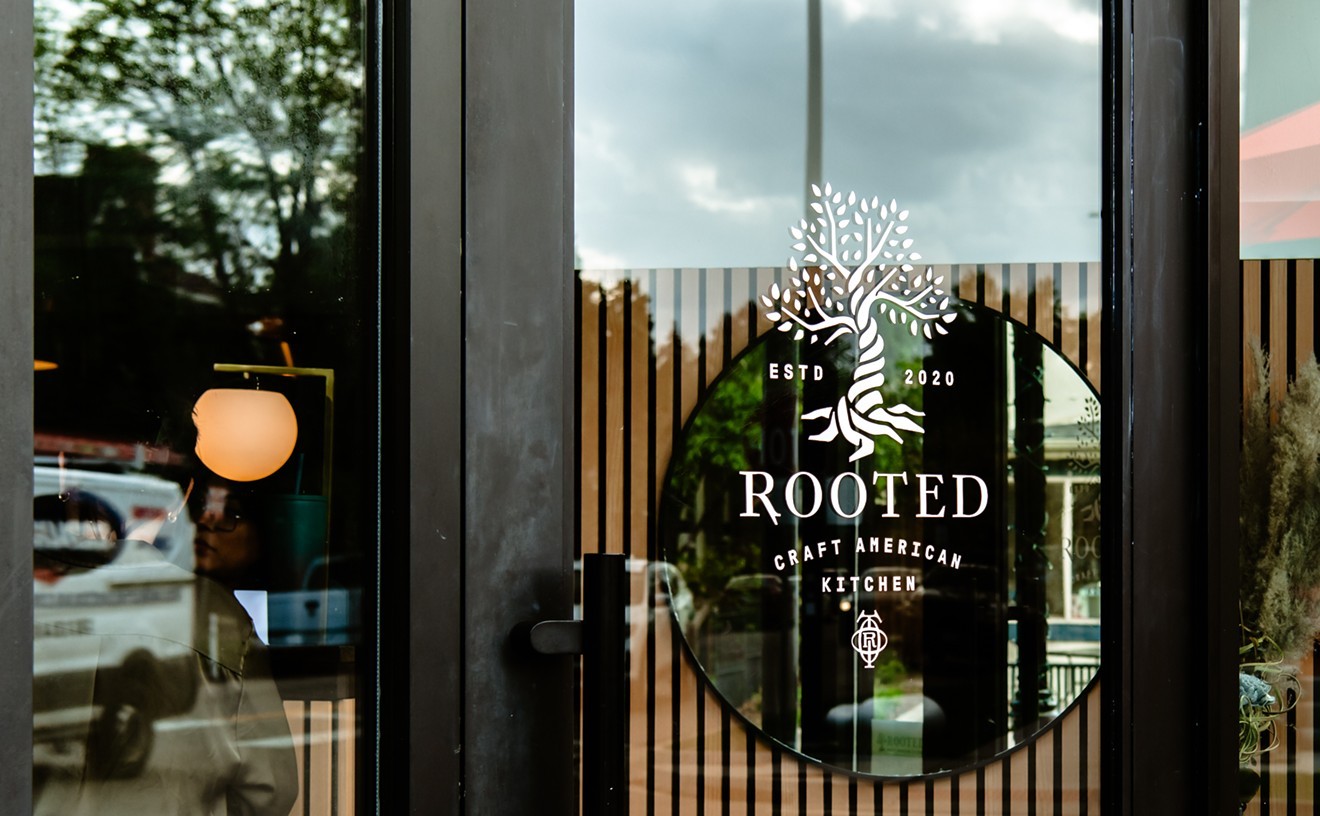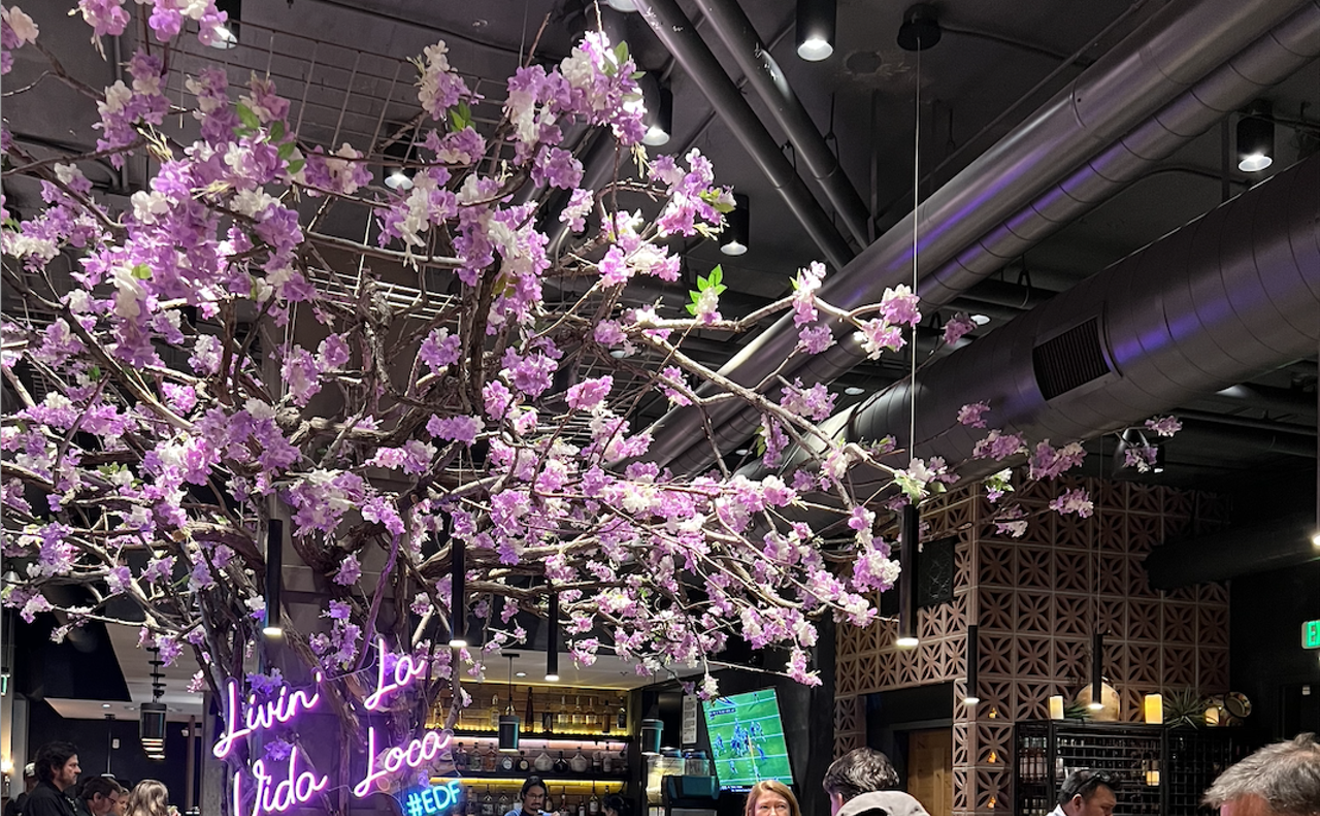Driving through the new Landmark development in Greenwood Village is like moving through an incomplete Hollywood backlot. Eight out of ten storefronts are empty, but they're varnished with promises: a salon here, coming spring 2008; a bar there, pledged for 2009. There are parking garages and street signs, lights in the stunted, half-grown trees and broad sidewalks laid out in expectation of crowds that, best case, won't arrive en masse for months. There is a sense of the entire project sitting crouched, waiting to pounce on any early money that happens to negotiate the confused tangle of new streets, wind through the construction sites and office parks, and reach this small, rigorously planned retail zone invisible from virtually any approach. There is a feeling of forced optimism glossing an obvious, tense desperation as early adopters — those who leased their spaces here on the Landmark high street and opened fast in hopes of beating the slowpoke competition — start wondering if the promised throngs will ever appear.
Probably, they will. Probably, by the time the boutiques and strangely pan-ethnic white-tablecloth operations with their ahi tuna tartare and bowls of French onion soup make their openings six and twelve months off, Landmark will no longer seem as desolate and cut-off as it does on a bright Saturday afternoon when all the Denver Tech Center offices are empty and the businessfolk are at home. But for now, there is only that sterile air of vague hope and incompleteness.
And garlic.
When the wind blows just right, kissing the exhaust vents on top of Charlie Huang's new restaurant, Jing, all the oxygen on the street seems to be replaced, for just the space of a single breath, with the greasy, earthy, candied scent of garlic roasting, garlic frying, garlic oil gleaming on the blade of a knife. It's like a foodie come-on, and to those of a certain curious and ever-hungry disposition, it is undeniable. True, I'd come here specifically to eat at Huang's multimillion-dollar, fancy-pants nouvelle Chinese restaurant, but had I been headed to Landmark for any other reason, I would have been hard-pressed to resist the siren scent of mother garlic moving down off the roof.
Jing is so new, it squeaks and smells of plastic wrap and really high hopes. Everything is shiny, gleaming and pure. It's beautiful, of course. Throw enough cash at any space and beauty is a cinch. But it's also sexy, which can't be bought — which must either be a natural accident or meticulously, artistically designed. Jing is clearly the latter: premeditated sexy, a yin-and-yang split between virginal white-on-white in the dining room (white leather banquettes, white walls, swirls of white froth hanging from the ceiling) and dark indulgence in the lounge, glossy like a newly discovered sin, with black leather booths and tables and chairs and curtains as purple as fresh bruises. There are no sharp angles here, only curves and blunt edges, walls of falling water, sweeping planes and fine details. The chopsticks are black lacquer ringed at the top with silver filigree. The bathrooms, with their planar sinks and magical stall doors that go from clear to opaque with the turn of a knob, are enough to make me wish I still participated in the kinds of illicit activities once carried out in the bathrooms of fancy bars and nightclubs, because using the men's room just for a piss seems like a waste of such attractive and Blade Runner-y real estate.
Still, for a restaurant, having style without substance is a worse crime than coming to the game bearing neither — and over the years, I've had my issues with the lack of substance in Huang's operations. Matter of fact, as I was shown to my seat on the saint side of the dining room, handed my oversized menu and brought my first beer, I tried to think if Huang had ever been involved with a restaurant where I'd want to eat if I weren't being paid to.
Short answer: No.
I've never been to his original Little Ollie's in Aspen, but I've had the misfortune of fighting the crowds to get a table at his debased and dumbed-down Cherry Creek outpost, where the yuppies go for their fix of Szechuan and Cantonese standards so toothless and inauthentic they might as well have been squeezed from an extruder. And I spent too many nights a few blocks away at Mao, when he and Jim Sullivan had that paean to international socialism and candy-colored martinis up and running. But in my world, everyone gets a second chance and a third chance and a tenth chance when necessary. Every night is a new opportunity, and every new restaurant is a fresh start, another chance to be not just good enough, but actually good. Maybe even brilliant.
And right now at Jing, Huang is coming very close.
One of the hallmarks of a Huang menu has always been a dependence on Chinese foods made nearly American by their ubiquity: kung pao this and General Tso's that, Chinese preparations that would seem more foreign in Beijing than in Omaha. Being a dick, I ordered almost exclusively from that dull region of Jing's menu, asking for chicken lo mein, for fried rice and dumplings and ginger prawns, expecting little but more of the same.
But what I got was the best chicken lo mein I've had in years: perfect, stiff and broken buckwheat noodles touched with a light, almost clear sauce powerfully flavored by garlic's sweetest notes and chicken that had been prepared as a paillard, given a fast turn or two around the wok, then served almost as a soft textural counterpoint to the firmness of the noodles. There were julienne threads of carrot wound through the nest of pasta, and pea pods so green and fresh they looked like jade and snapped when I bit them. With one plate, Huang's cooks proved that the yuppie-bait style of Chinese cooking does not have to suck. If handled carefully, it can be delicious.
I was briefly set back by an order of nasty lobster har gow dumplings that had been steamed in the dim sum style but left in the damp heat far too long, until they tasted like tiny lumps of lobster bubble gum wrapped in a gelatinous skein of goo. But then the ginger prawns arrived.
I worked once in a Chinese restaurant — the only white kid on a staff of Vietnamese ex-mercenaries (the killing kind, not the cooking kind) and illegal Chinese immigrants who worked all day and all night for no money and often slept in the basement. It was a great gig. The owners were so crooked they had to get up every morning and screw their pants on, and just about everything I know about the larcenous side of the restaurant business I learned from them. And most of what I know about the way the Chinese truly eat I learned from their cooks, who, twice a day, every day, would make a staff meal out of whatever odds and ends were knocking around the kitchen. One of the things they served was a kind of omelet made with shrimp and lemongrass, eggs and bitter greens and slivers of raw ginger. They'd crack a dozen eggs into a pot of boiling broth, whisk them until the egg separated into clots of grayish protein, and then, with one big handful, add everything else, allowing it to poach in the liquid for a minute before scooping the mess out with wire strainers and dumping it unceremoniously into a huge trencher.
The staff would all eat together at the bar, sharing the big bowl, stabbing with our chopsticks. Eventually, this became one of my favorite meals: eating shoulder-to-shoulder with killers and crooks, fighting to get at the best bits soaking at the bottom of the bowl.
With the ginger shrimp, Jing's kitchen has re-created this dish almost perfectly, adding to it the sting of a white ginger sauce and the subtle citric bite of lemongrass used the way that lemongrass is meant to be used — as a grace note, a gentle acidic nudge to the tastebuds that cuts the duff flavor of ugly, gray poached egg. I was surprised by what Jing had pulled off, blissful over the rediscovery of flavors I'd thought long gone from my current, less larcenous life.
When I returned on a weeknight, the sinners' lounge was like an episode of Accounts Receivable Clerks Gone Wild, with a lot of office drones pounding terrible things in martini glasses and rich men in shoes that cost more than my car stabbing dumplings with their chopsticks. This time, I was afraid to venture into the bathroom for fear that all those things I wanted to do might actually be going on — being done now by ugly people with awful hair plugs and pantsuits — so I switched from beer to whiskey and ate Shanghai pork dumplings running with red wine vinegar; smoky, sweet Peking duck; and rock shrimp tempura, honey sweet and touched with a red-chile aioli that was excellent until it started to cool and congeal.
I tried the chicken lo mein again and found it to be good, but somehow less good than it had been the first time — the kitchen no doubt roughed up a little by a late happy-hour pop and not paying quite as much attention to the careful balance of flavors. But the simple fried rice served as a platform for showcasing the powers of a proper French mirepoix in Chinese cooking, and the roast pork tenderloin with honey-barbecue sauce was a wonderful, house-made version of the Chinese barbecued pork served at every strip-mall takeout joint in the country, only cut from a full loin and served almost naked, sided by just a few steamed vegetables as a conceit to the health-conscious and a small bowl of white rice.
This could be as good as it gets at Jing. In the past, Charlie Huang's restaurants have seemed to suffer from the grinding repetition. Right now, the kitchen is still new and amped up over its woks and French knives. The cooks are still excited by lo mein and, when they have the time, will make the best lo mein you've ever had. So go now while the place is still great, before it becomes jaded and buried beneath its own inevitable success, before time, trade and diminished expectations take their inexorable toll.










